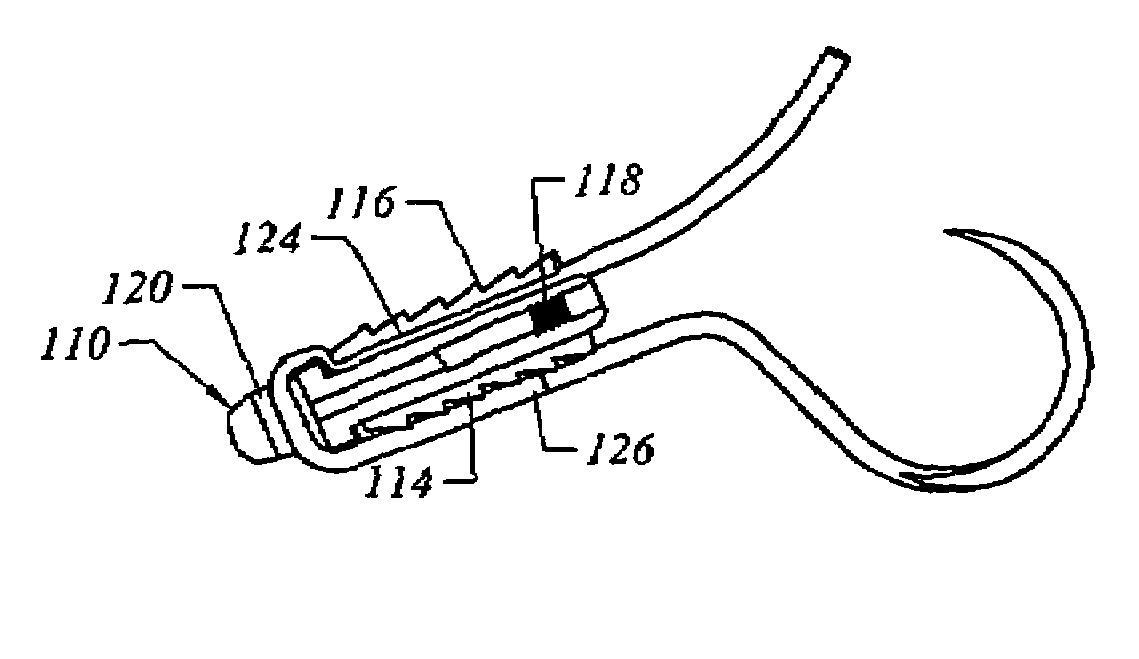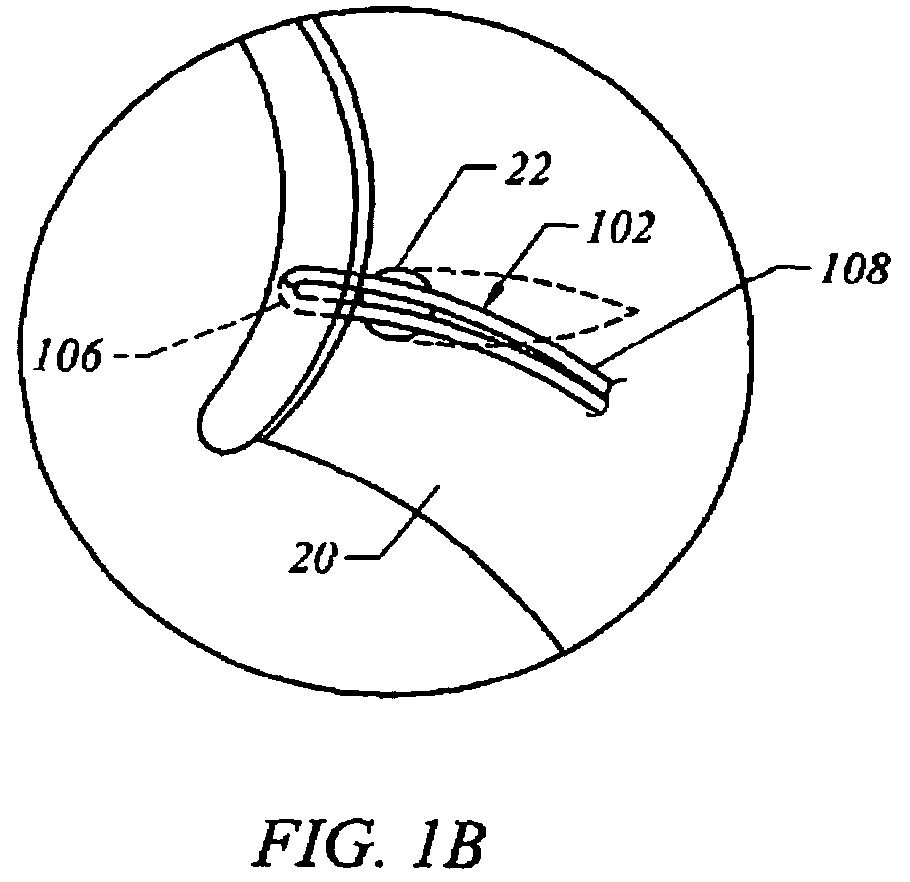Method and apparatus for attaching connective tissues to bone using a knotless suture anchoring device
a technology of connective tissue and anchoring device, which is applied in the field of anchoring and securing connective tissue, can solve the problems of inordinate skill level required to facilitate entirely arthroscopic repair tissue, clumsy intracorporeal suturing, and time-consuming
- Summary
- Abstract
- Description
- Claims
- Application Information
AI Technical Summary
Benefits of technology
Problems solved by technology
Method used
Image
Examples
Embodiment Construction
[0036]The present invention provides improved methods and devices for knotless suturing of tissue. Although the variation discussed herein discusses use of a suture, the term “suture” may include any piece of material that is used to close a wound or connect tissue (e.g., catgut, thread, wire, etc.) so long as the material can be used with the other portions of the anchor as described herein. Accordingly, sutures as described herein may include polymeric, metallic, or other types of sutures.
[0037]For illustrative purposes, the examples discussed herein show the use of the anchoring system to suture soft tissue to a bone structure, specifically the soft labrum to the glenoid. In one variation of the system, the medical practitioner affixes a length of suture through soft tissue to approximate and fix the soft tissue with respect to the body cavity (e.g., a bored hole in the bone structure). It should be understood, however, that the suture anchor apparatus may be utilized to secure a...
PUM
 Login to View More
Login to View More Abstract
Description
Claims
Application Information
 Login to View More
Login to View More - R&D
- Intellectual Property
- Life Sciences
- Materials
- Tech Scout
- Unparalleled Data Quality
- Higher Quality Content
- 60% Fewer Hallucinations
Browse by: Latest US Patents, China's latest patents, Technical Efficacy Thesaurus, Application Domain, Technology Topic, Popular Technical Reports.
© 2025 PatSnap. All rights reserved.Legal|Privacy policy|Modern Slavery Act Transparency Statement|Sitemap|About US| Contact US: help@patsnap.com



